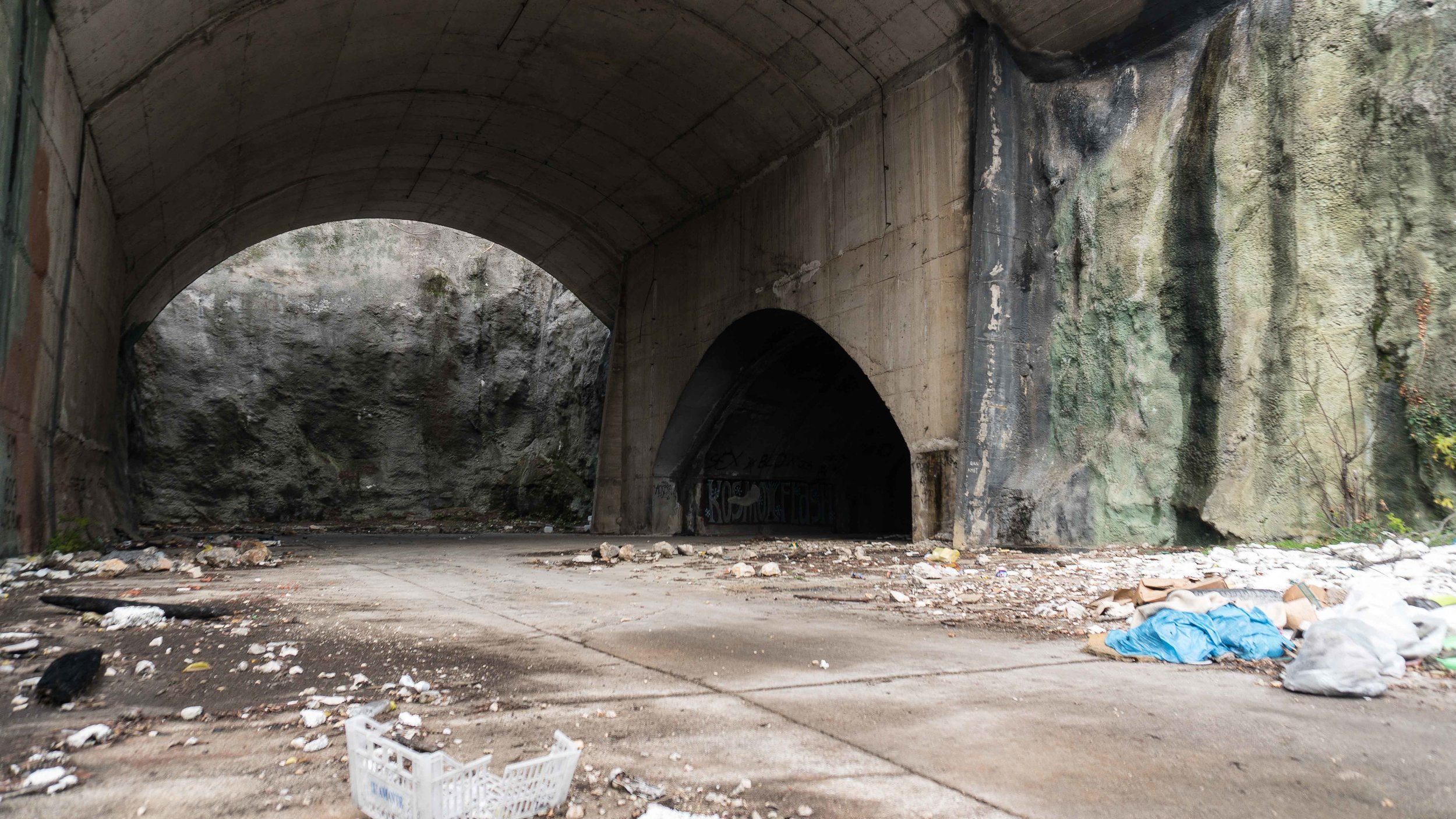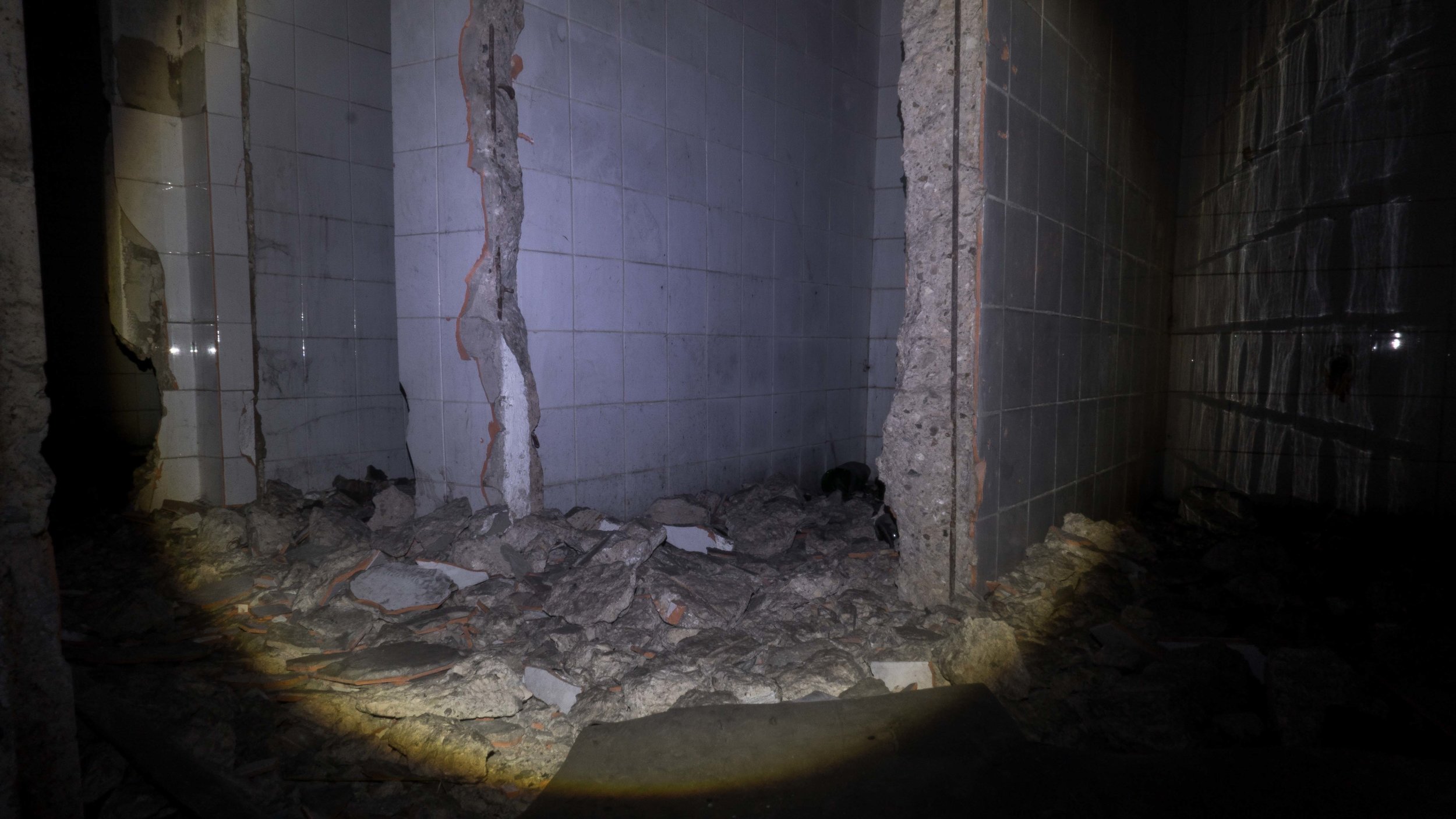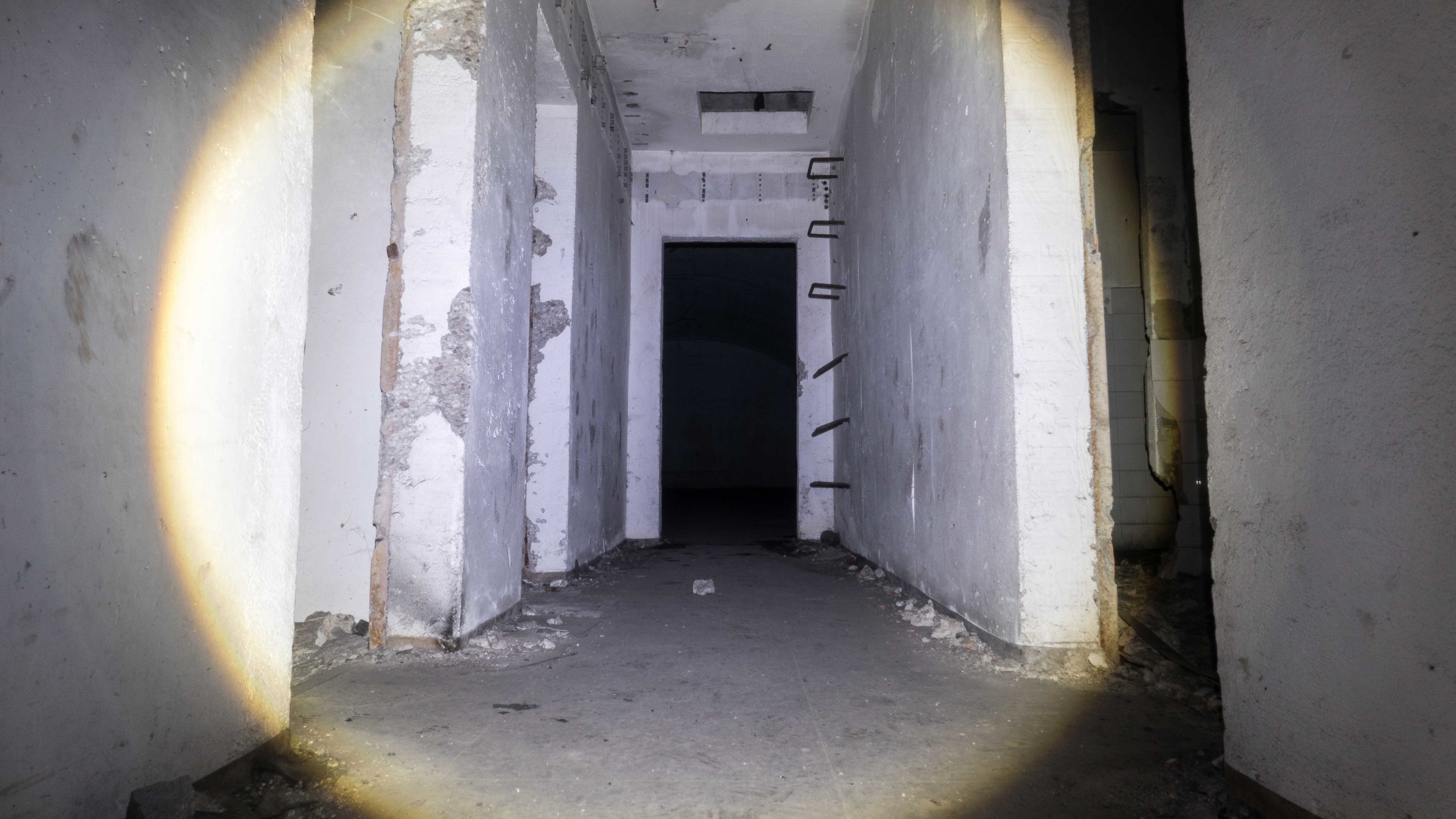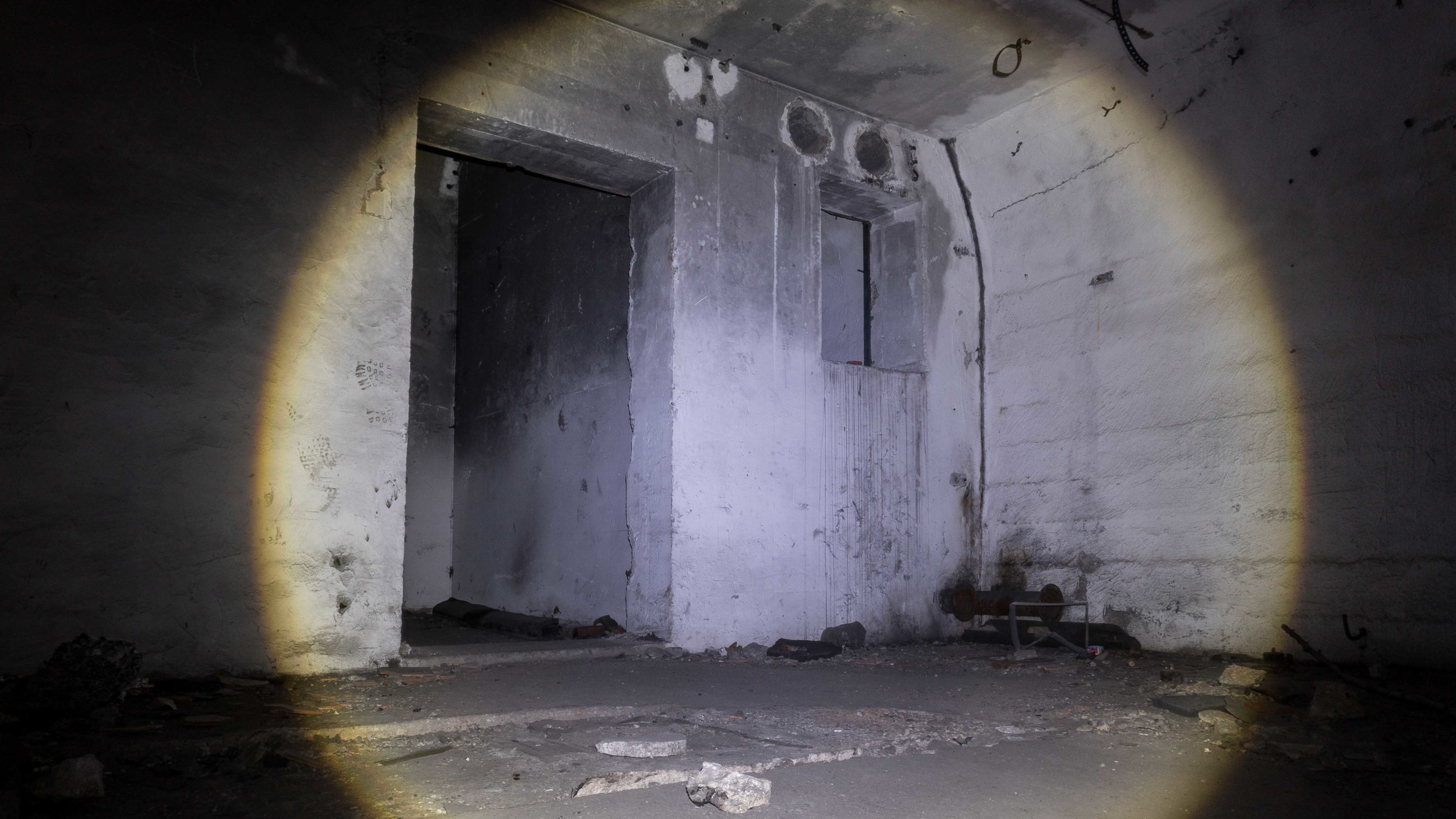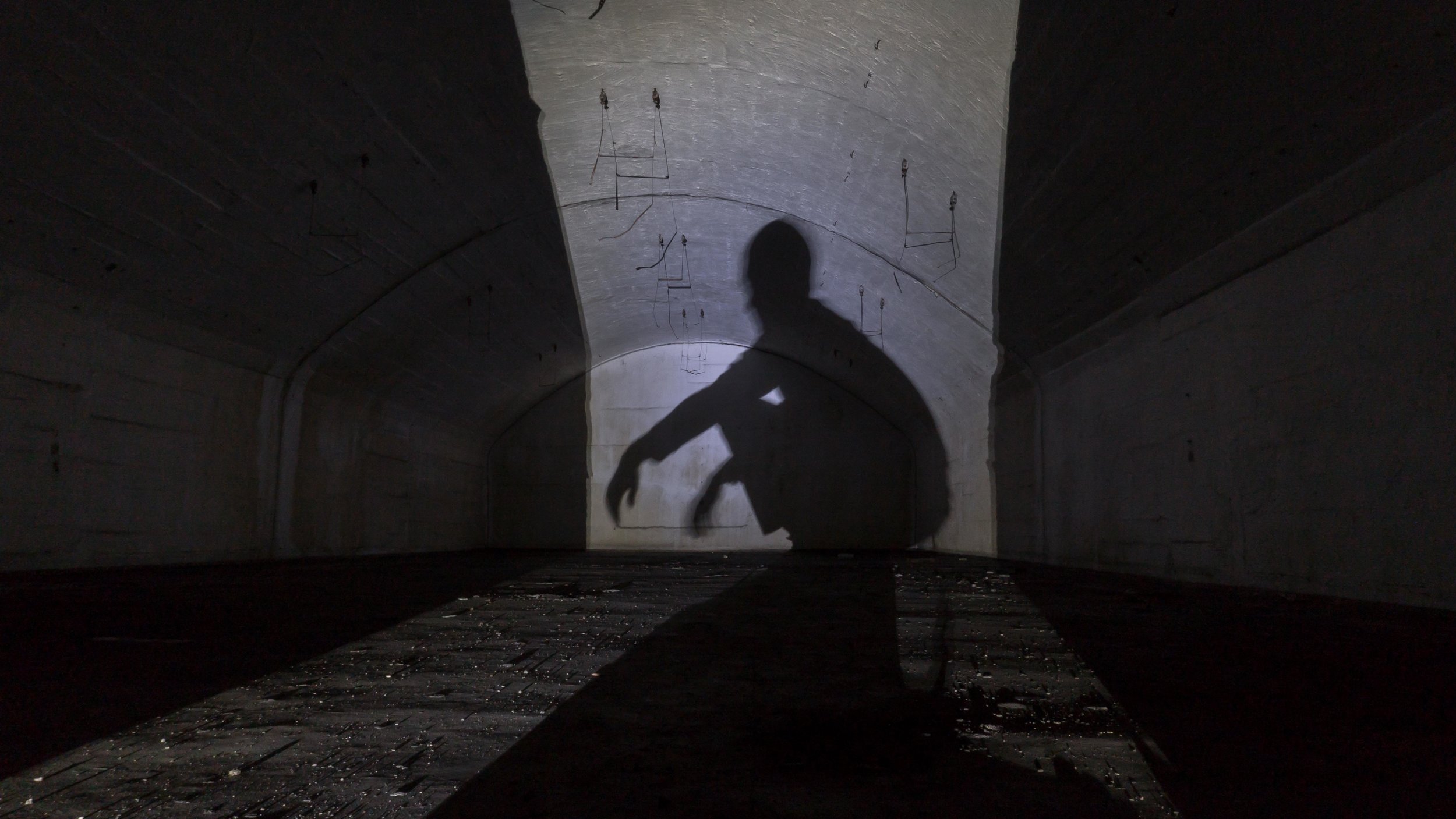Yugoslavia is a relatively unknown subject for the new generation; if you ask a millennial to point it out on a map, they may have some difficulty. It’s no surprise then that there are still many secrets across the Balkans of relics from the Socialist Federal Republic of Yugoslavia. Occasionally installations such as this aircraft hangar are rediscovered.
Located outside of Mostar, in Bosnia & Herzegovina, lies a hardened aircraft shelter. Built to withstand enemy attack, the Yugoslavian era aircraft hangar is positioned opposite the airport, ready to deploy planes at a moments notice. Now, it is an abandoned remnant of war and accessible to those who dare. It is not recommended to simply stroll into such facilities as it was common for troops to booby trap them before leaving.
This hangar in particular is known by the locals given its close proximity to the city and strategic importance during the recent wars of the early 90s. At present, it has received many visitors since its discovery and has become an unofficial tourist attraction of sorts. The following is my account exploring the site with my companion Nemanja.
After visiting the historical town of Blagaj, we hitchhiked to Gnojnie, near the hangar's entrance. Nemanja asked the driver of the red Volkswagen MK2 (an iconic and infamous vehicle throughout Bosnia & Herzegovina) to drop us at the coordinates marked on the map; he knew exactly what we were looking for.
From the main road there is a long concrete path that leads to the base of the hill and to the entrance of the tunnels. The sheer scale is incredible; the opening is a concrete arch protruding from the mountainside, whilst the entrance passage is enshrouded by darkness. The floor is littered with discarded plastic beer bottles and other rubbish.
The exteriors camouflage is fading and the surrounding nature thrives, bringing the bunker further into the void of obscurity. We approached from the southern side and were eager to find out what lies within.
Nemanja feeling historical
Looking into the tunnel, you can make out a blast door but darkness soon envelops the rest. Always prepared, I affixed my headlamp and, watching each foot placement, we carefully walked inside.
Looking back to the entrance.
Soon the discarded rubbish and broken glass diminished. You must be vigilant of channels and holes in the concrete floor as there is sporadic rusting pipework and exposed wiring. A few hundred metres into the tunnel it bends coming back round and out further down the road; there are two entrances to this hangar. Nemanja is a budding historian and told me the hardened aircraft shelter would have housed more than 10 hunter class airplanes like the MiG-29.
I was yet to take any pictures of the exterior and Nemanja correctly suggested we hurry before losing the light. It was late in winter and already approaching dusk, giving the bunker a foreboding appearance, as the clouds left no trace of the sun's warmth.
Back in the center of the tunnel is what appears to be the old control room. Again there are two entrances; Nemanja entered the left whilst I walked through the right. I passed into what was left of the bathroom and into a small corridor where we regrouped. At the end of this corridor is a large hall, which was likely the heart of operations and just before the entrance is a corroded ladder leading to a small crawl space above.
From past experience, I am very cautious climbing such things. Testing its durability, I thought it safe to continue. Each steel rung was warped and rusted, but it was stable and felt relatively safe. Above in the crawl space only broken pipework and sparse wiring remain. The facility had been stripped of all equipment down to the plumbing. Long after the military had left, the scrap metals must have been stolen.
The view from a window in the crawl space looking down into the large chamber at the end of the corridor.
It was late in the afternoon during winter and light was at a premium so we needed to be swift. Hitchhiking back to the city at night is not a great idea - though inside the hangar it didn’t matter as the eye of the Leviathan is always in darkness.
First left along the corridor.
I was finishing up outside the control room when we heard a loud rumble coming towards us. Looking down into the tunnel there was a light approaching and we extinguished ours to remain undetected; the likelihood is we were safe but in such an isolated area you should edge on the side of caution. It was car, most likely locals just having fun driving through the tunnels but the engine’s rumble reverberated at such volume that it felt like it could be a MiG-29.
We only spent a few hours at the site, but I could have easily stayed for much longer. I was only able to take a few pictures as each one averaged 15 minutes with nothing but my headlamp illuminating the base. That being said, imagine how my thighs felt after taking this picture!
I hope this has provided some insight into what it’s like walking through a derelict, post-war aircraft hangar. Unfortunately any secrets have since vanished and only the structure remains. I was thrilled to walk, and climb, through the facility; it was easily one of the most exciting things do in Mostar. I had anticipated this day for over a year, it was a dream to finally stand among the history and imagine what it would have been like to see the tunnel filled with jet fighters. There are more treasures hidden across the former Yugoslavia and I’m sure I’ll root them out; let’s hope they’re safe and not mined by the former generations.
If you enjoyed this, you may also like Inside Mostar's Abandoned Sniper Tower.


